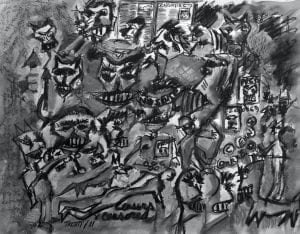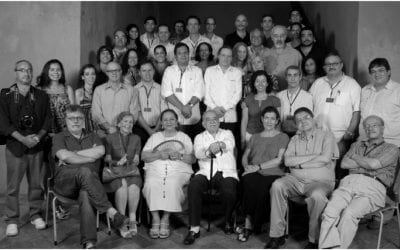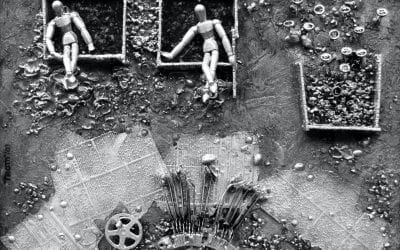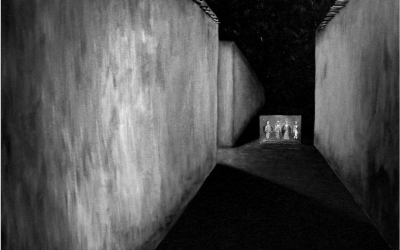Silencing the Media
Crime Syndicates and Repressive Governments
Citizens’ rights to be informed on issues of public interest are being undermined throughout Latin America, damaging the health of democracy across the region. Violence from powerful criminal syndicates, abuse of state resources by authoritarian governments, and politicized judicial rulings are all producing increasing media censorship. Although not as blatant as during the era of military dictatorships, when journalists were murdered and “disappeared” in large numbers and armed forces dictated what could be reported, the re-emergence of censorship and self-censorship in the region is deeply worrisome.
Widespread violence and lawlessness have spread over the region in the last decade, undermining political stability and threatening the future of democracy. Reporters and media covering organized crime have come under siege. The unprecedented number of murders, attacks, disappearances and threats are devastating investigative journalism. As a result, scores of journalists are forced to censor themselves; their media outlets often keep quiet to survive.
Powerful drug organizations disputing territory in Mexico, guerrillas and paramilitaries in war-ravaged areas of Colombia, criminal groups in politically volatile Honduras, violent street gangs in Guatemala, and drug traffickers in the Brazilian slums are terrorizing the news media. Undermined by pervasive corruption and judiciaries that are as overburdened as they are dysfunctional, governments across the region have failed to provide security, leaving the media wide open to attacks.
More than 30,000 people have been killed in drug-related murders since Mexican President Felipe Calderón took office in December 2006 and launched a massive offensive against drug cartels, according to the Attorney General’s Office. The killings reached their highest level in 2010, jumping by almost 60 percent from the previous year. More than 30 journalists have been killed or disappeared during Calderón’s mandate, making Mexico one of the world’s most dangerous countries for the press.
Mexican journalists outside Mexico City have almost abandoned any sort of investigative work. Basic reporting on crime has become a serious challenge in many areas across the country. Reporters are terrorized, while state authorities—largely fearful of (or corrupted by) drug lords—are unwilling to carry out their responsibilities. In Reynosa, a border town in the state of Tamaulipas, the drug cartels have total control over the city. They also control the flow of information, and dictate what is news and what isn’t. Shootouts in broad daylight, killings and cartel-blockades are not even covered. Reporters have been cowed into silence out of fear of violence.
The 2008 killing of veteran crime reporter Armando Rodríguez Carreón, known as “El Choco,” shocked even violence-plagued Ciudad Juárez, which sits on the border with Texas. Rodríguez —who worked for the daily El Diario—had written a story accusing the state prosecutor’s nephew of ties to drug traffickers a few days earlier. On November 13, 2008, the seasoned reporter was sitting in his car in the driveway of his home, with his eight-year-old daughter in the back seat, when he was shot to death. A federal investigator assigned to the case was soon murdered; a month later, so was his successor. The killing produced a chilling effect on the city’s press corps.
Criminal groups, ruthless street gangs and impunity have also influenced the press in nearby Central America. In 2010, nine Honduran reporters were killed in a wave of lethal violence. An in-depth report on the murders by the Committee to Protect Journalists found a pattern of poor and shoddy investigative work in most of the cases, all of which remain unsolved. The record series of murders occurred in a charged political climate as Honduran society broke down after a coup ousted former President Manuel Zelaya in 2009. Government officials in current President Porfirio Lobo’s administration have sought to play down the crimes and the climate of impunity in the country.
The case of popular Honduran TV personality Nahúm Palacios Arteaga illustrates this pattern of crime and impunity. Palacios, 34, the anchor for Channel 5, the main broadcast station in the Tocoa region, was gunned down by unidentified assailants while he was driving home the night of March 24, 2010. Palacios had strongly opposed the 2009 coup and turned Channel 5 into an opposition station, according to his colleagues. He had been harassed, threatened and finally detained by military personnel in June 2009. The Inter-American Commission on Human Rights recommended precautionary measures but the government did not implement any safety program to protect Palacios.
The case was also marked by a series of investigative failures. The autopsy was conducted almost three months after Palacios had been gunned down; the coroner never examined the body after the murder. A prosecutor in charge of the case said the exhumation and autopsy were suddenly important because Honduran authorities had solicited the help of the U.S. Federal Bureau of Investigation. Investigators, according to the prosecutor, needed to show something to their U.S. counterparts.
In nearby Guatemala, drug-related violence has spiraled as gangs compete for smuggling routes into Mexico. Mexican drug cartels have been actively operating in the northern region of the country. Guatemalan forces tasked with fighting drug traffickers are out-powered. Reporters in northern areas are suppressing any coverage of crime in fear of retaliation. Self-censorship is so pervasive that massive gun battles between drug traffickers go unreported, according to the Guatemala City press group Centro de Reportes Informativos sobre Guatemala (Cerigua).
Threats of deadly violence have also silenced numerous reporters and media in Colombia. Research done by the Committee to Protect Journalists shows that during the five-decade civil conflict, journalists and editors—particularly those in the areas controlled by illegal armed actors—regularly censored themselves, fearing retribution from all sides. While lethal violence has ceded since 2002, Colombia is still one of the world’s most dangerous countries for the press.
In Venezuela, the decade-long confrontation between the administration of President Hugo Chávez and the private media has seriously restricted media freedoms. Based on political decisions rather than transparent legal procedures, government regulators have pulled the broadcast concession of the oldest television station, RCTV, and revoked the licenses of dozens of radio stations in the last few years. The Venezuelan government, free press advocates agree, is gradually silencing opposing views in a clear attempt to control the flow of information and systematically suppress dissent.
Recently approved legislation has provoked increased concern about Chávez’s efforts to censor news coverage. In late 2010, a lame-duck National Assembly passed a reform of the 2004 Law on Social Responsibility in Radio and Television that expanded broadcast regulations to the Internet. In the new provisions, messages that “incite or promote hatred,” “disrespect authorities,” “foment citizens’ anxiety or alter public order” or “constitute war propaganda,” will be banned. The legislation also limits online media content according to the time of the day, with adult content reserved for shows after midnight. Digital media that violate the law can be fined up to 13,000 bolivars (US$3,000), while service providers that fail to respond to government inquiries could be fined up to “10 percent of the previous year’s gross income,” in addition to “72 hours of continuous suspension of services.”
The Social Responsibility law, also known as the “content law,” was approved in 2004 and has been widely criticized by international human rights groups for its broad and vaguely worded restrictions on free expression. For instance, Article 29 bars television and radio stations from broadcasting messages that “promote, defend, or incite breaches of public order” or “are contrary to the security of the nation.” In order to comply with the law, broadcasters have cancelled critical news programming.
In Ecuador, official decisions to censor news coverage have alarmed local free-press advocates who believe President Rafael Correa’s administration intends to target critics and control information. Interrupting news programs on private television to air official rebuttals to criticism has become standard practice since 2010. The Ecuadoran government has a contentious relationship with the private press and has become increasingly intolerant toward criticism, local journalists said. Private network Teleamazonas was forced off the air for three days in late 2009 after it ran a story about the potential effects of natural gas exploration off southern Puná Island. Regulators found the network had “incited public disorder.”
Censorship is still far from being as pervasive as when it was an established mode of repression by the military regimes that dominated the region more than thirty years ago. But in this new, more democratic era, censorship and forced self-censorship have again become common for many Latin American journalists and media outlets, whether out of fear of violence or government repression. This alarming pattern is clearly undermining the media’s ability to report the news freely, but most importantly, it affects the fundamental rights of Latin American citizens to freedom of expression and access to information.
Spring 2013, Volume XII, Number 3
Carlos Lauría is the Americas senior program coordinator of the New York-based Committee to Protect Journalists since 2002. He is responsible for monitoring, documenting, and developing responses to press freedom violations in Latin America. As chief strategist and spokesperson for CPJ on media issues in the region, he writes regularly on press issues for media throughout Latin America and Europe.
Related Articles
New Journalists for a New World
I received a surprising phone call one day in late 1993, when I was the director of Telecaribe, a public television channel in Barranquilla, Colombia. The caller was none other than Gabriel García Márquez. “Will you invite me to dinner?” he asked me. “Of course, Gabito,” I…
Latin American Nieman Fellows
A few days after I arrived at Harvard in August 2000 to begin my work as curator of the Nieman Foundation for Journalism, Tim Golden, an investigative reporter for the New York Times in Latin America, phoned me. “Could I find a place in the new Nieman class for a Colombian…
Freedom of Expression in Latin America
In June 1997, Chile’s Supreme Court upheld a ban on the film “The Last Temptation of Christ,” based on a Pinochet-era provision of the country’s constitution. Four years later, the Inter-American Court of Human Rights heard a challenge to this ban and issued a very different…





